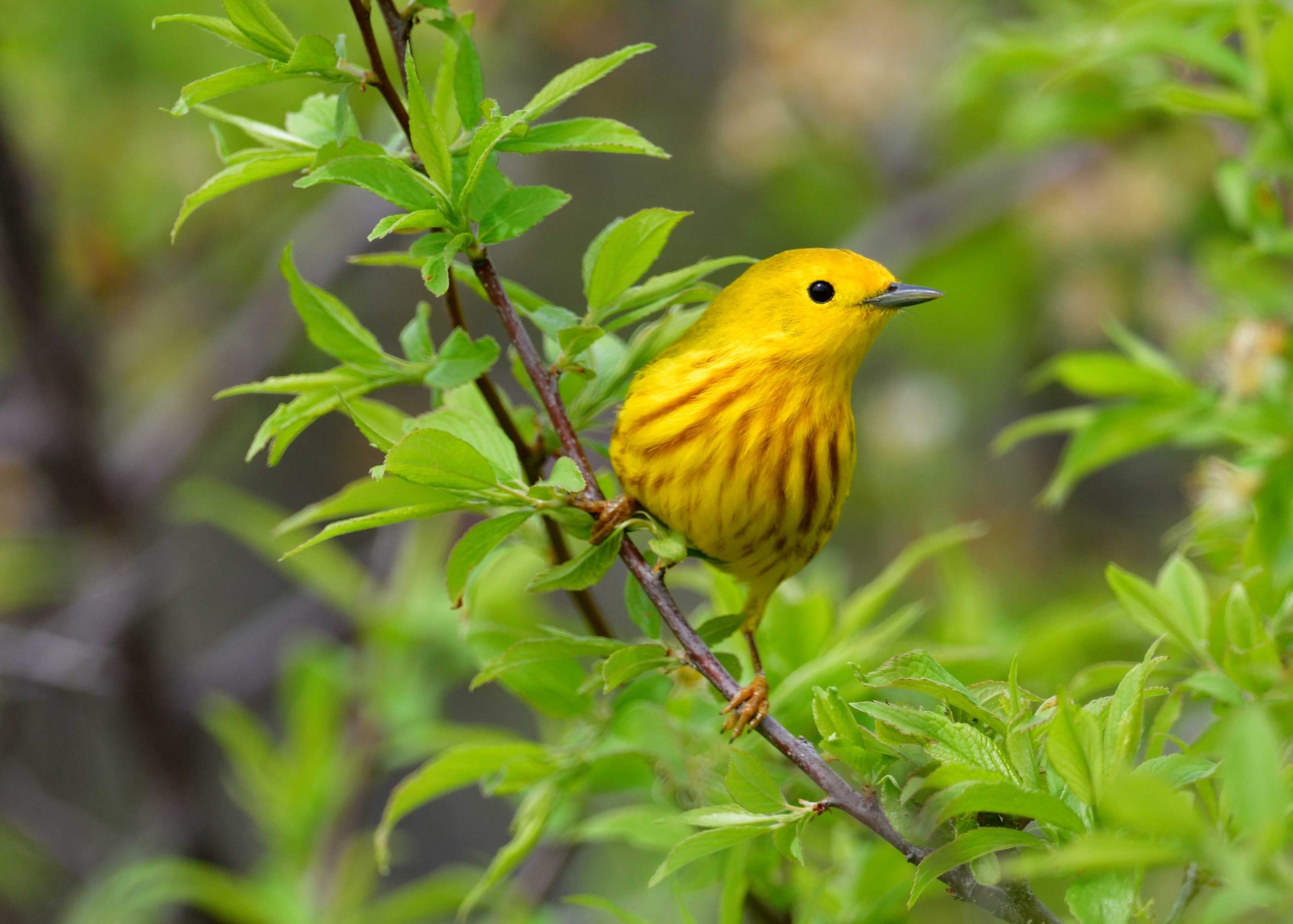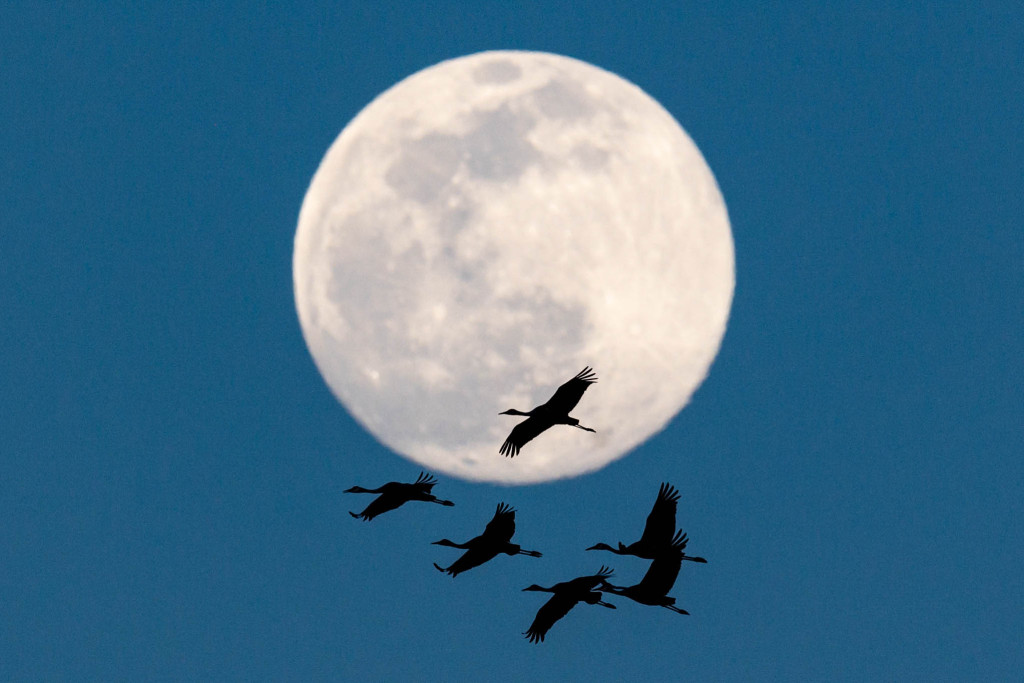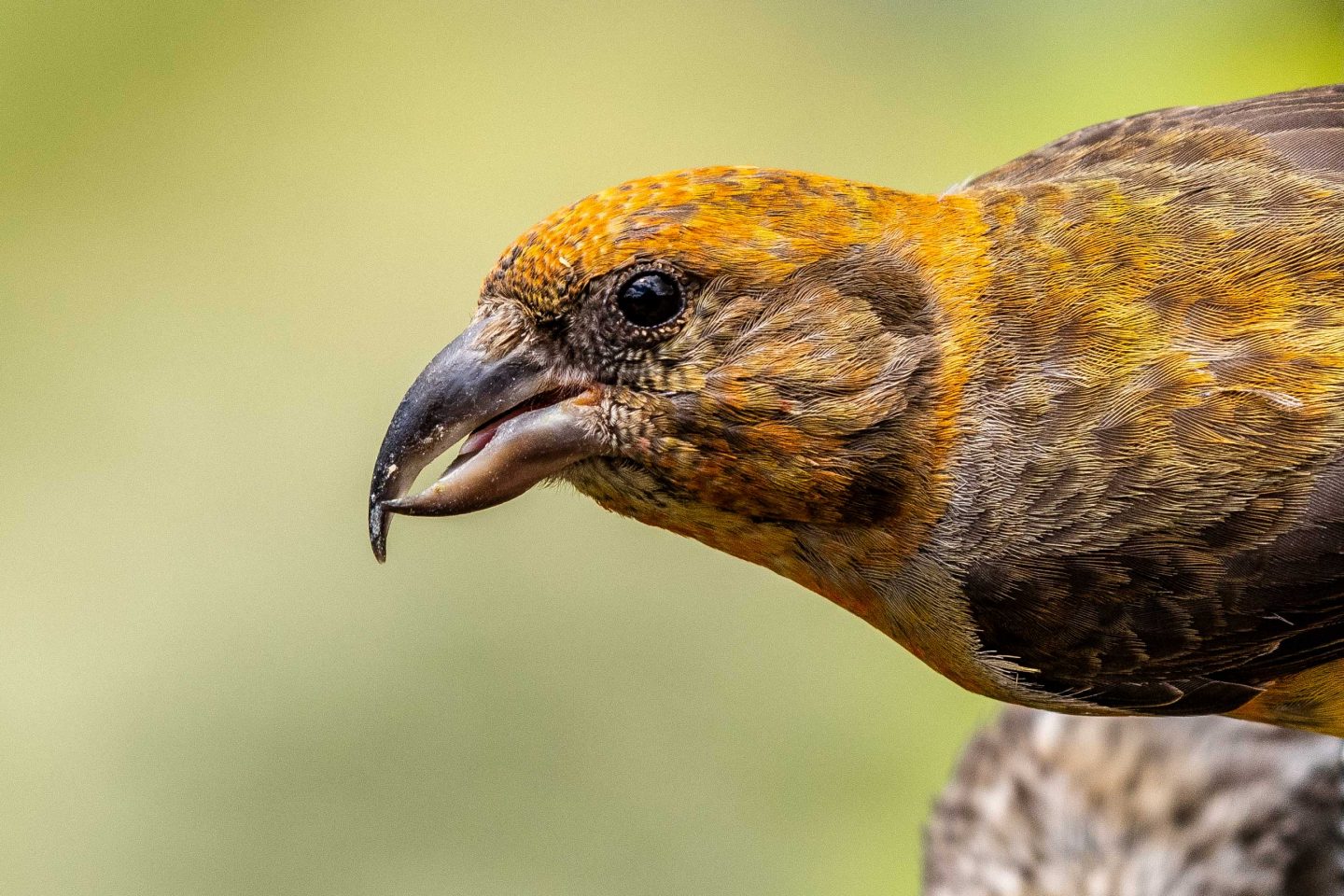
By Delanie Bruce, Education Manager
Every spring and fall, the skies above Nebraska fill with thousands, if not millions, of migrating birds. From tiny warblers — weighing less than a few nickels — to towering sandhill cranes, birds are on the move. However, bird migration is more than just “flying south for the winter.” It’s a deeply complex journey essential for the survival and nesting of many Nebraska species.
About 75 percent of North America’s 900 bird species are migratory, although each one takes on migration in its own way. Some species migrate short distances, moving just a few hundred feet in elevation into the mountains. Some migrate medium distances, traveling a few hundred miles or so between states, such as North Dakota to Texas. Others, like the Arctic tern, are long-distance migrants, traveling from the Arctic to Antarctica and making a round-trip journey of over 18,000 miles each year!
One of the first clues to migration readiness is a behavioral phenomenon called migratory restlessness, the technical term coined by German behavioral scientists as “zugunruhe.” This internal clock signals to migratory birds each fall and spring that it’s time to move. Many of our Nebraska songbirds migrate at night, while others migrate during the day, making it easier to track their destinations.
But how do migratory birds know where to go? While navigation during migration is still a mystery, scientists have developed theories on how migratory birds might be finding their way.
By “Compass” and “Map”
Birds have their own internal “compass” and “map” that allows them to read the skies, recognize environmental landmarks and use Earth’s magnetic field. It also helps that many birds migrate to the same locations every year — some even use the same “rest areas” along their path.
Nighttime migrants navigate their journeys using the position of the stars and constellations as markers. During the day, birds will also use the sun’s position in the sky to orient themselves or learn environmental landmarks, such as rivers and mountain ranges, to plot their course.

Earth’s Magnetic Field
One of the more remarkable tools some birds use for orientation is detecting the Earth’s magnetic field, generated by our molten core. There are several theories about how birds use the magnetic field to navigate, one of them being that birds have pigments in their eyes that allow them to visualize the magnetic field. They can “see” the magnetic lines of the Earth to determine where they are and where they need to go. According to recent experiments, their ability to detect these magnetic fields is dependent on cryptochromes, blue-light sensitive proteins in the retinas of their eyes.
Genetic Cues
Birds may only use one type of navigation, or integrate a combination of multiple environmental and genetic cues to navigate their journeys. Their genetic programming gives birds the basic idea of where to go and how, as they will often make their first migration without their parents. Over time, routes will be fine-tuned, as birds use a combination of navigational techniques along their journeys.
Nebraska Birds
In Nebraska, we witness one of nature’s greatest migrations every spring. Near Kearney, along the Platte River, sandhill cranes gather at a rest area by the hundreds of thousands, making their way north from wintering grounds in Texas, New Mexico and Mexico to breeding territories as far north as Siberia. Their ancient calls echo over the landscape, signaling a journey that spans continents.
In the Pine Ridge landscapes of western Nebraska, we find more unpredictable travelers — irruptive species like pine siskins and red crossbills. These birds don’t migrate on a strict schedule but move in response to the availability of cone seeds. Some years, they remain north in Canada and northern United States; other years, they flood southward in huge numbers, similar to the major irruption in fall 2020. Their nomadic habits are tied to food rather than season.

As August continues and September begins, keep your eyes — and ears — open. Warblers, thrushes and sparrows, to name a few, will continue to migrate through Nebraska. Migration will continue into November: songbirds first and then waterfowl. They will paint the skies with fleeting silhouettes and fill the air with birdsong.
To dive deeper into migration and where birds go, check out birdcast.info — an engaging online tool that allows you to track migration in your county every night.
Bird migration is not simply a flight south for winter. It’s a life-or-death journey, a biological marvel and one of the most awe-inspiring events in nature. The next time you spot a flyer overhead, remember: Birds are navigating a complex world using their instincts, intelligence and some of the most incredible adaptations in the natural world.
Delanie Bruce is an education manager for the Bird Conservancy of the Rockies and the Nebraska Game & Parks Commission.
